|
Since Bridgers 4 is coming soon, I've selected an Awesome Animal that makes an appearance in the book. Well, kind of... The creature in the story is given the name tiger beetle by one of the bridgers because it is fast and aggressive. But it is actually very different from the tiger beetles of our own world. You will have to read Bridgers 4 to see how amazingly different the creature in the book really is. So, what the heck is a Tiger Beetle? Tiger beetles are a large group of beetles in the subfamily, Cicindelinae, with over 2,600 species and subspecies. What makes the tiger beetles so awesome? Well, they are strikingly colorful, they can run fast, and they are aggressive predators. Years ago, the first time I saw a tiger beetle, I didn't know what it was. I saw this green insect zipping back and forth on the ground, so fast that my eyes could hardly keep up with it. When it finally stopped, I got on my knees and observed a strikingly brilliant green beetle. It turned out to be the six-spotted tiger beetle: Amazing facts about Tiger Beetles How fast are tiger beetles? They can run 5.6 miles per hour (9 km/hr). That may not sound fast, but if you consider the tiger beetle's size, this is about 125 body lengths per second! They are among the fastest runners of all insects. They use this speed to catch their prey. But they do this in an unusual way. They sprint really fast for a short distance and then abruptly stop to visually reorient themselves. Then they take off running again. It is thought that they do this because their visual sensory system cannot keep up with their speed. They simply cannot process the visual images fast enough. So when you watch these insects run, you'll see them dart forward, stop, dart forward, stop, and so on. Below is a festive tiger beetle from Nebraska (Central US). Tiger beetles have mandibles (jaws) that are adapted to their specific prey. Their large mandibles look kind of like serrated swords, and they are perfect for quickly grabbing and chewing up smaller insects. As the tiger beetle chews its prey, it sucks the yummy fluids out and then tosses aside the crunchy hard parts. Each species of tiger beetle has mandibles that are specific for the prey it eats. Those that have small mandibles eat only small insects, and those with large mandibles can feed on much larger prey. Because of this, it is possible for several types of tiger beetles to live in the same area because they don't compete for the same food. Check out these chompers: Tiger beetles can usually run fast enough to get away from predarors that might want to eat them. But sometimes they have to use their Plan B. If a very fast predator, like a lizard, chases them, they can quickly fly away. They don't usually fly far, perhaps twenty feet, but that's far enough to escape. When it comes to escaping predators, tiger beetles have additional strategies. Some of them have patterns of spots and stripes on their backs that confuse predators, making it look like they aren't even an insect at all. But perhaps the most impressive predator defense is the production of cyanide. You've probably noticed the bright colors of some of the beetles in these photos. The really bright ones are species that produce cyanide, which is extremely bitter and yucky. In fact, it can kill smaller predators that make the mistake of trying to eat a tiger beetle. These bright colors are a warning to predators to leave them alone. Check out this gold-spotted tiger beetle: Tiger beetles often live in warm environments, and the ground can become very hot in the bright sun. Those tiger beetles that live in the hottest places often have exoskeletons that are light in color so that they don't absorb heat. They also have numerous hairs on their underside, which insulates them from the ground's heat. Not only that, but they have long legs that allow them to stand tall, putting distance between their bodies and the hot ground. Well, I've explained that tiger beetles are vicious and effective predators. But their young, the larvae, are just as impressive. Tiger beetle larvae are like smaller versions of the creatures from the movie Tremors. The larvae have huge mandibles, and they use the mandibles to dig a tunnel in the soil. Then they back into the hole and sit there with only their head exposed, waiting for prey to come by. That's kind of creepy! And they have hooks at the back of the abdomen that grip the soil so that they can hold on to large prey they've grabbed. So, the Tiger Beetle deserves a place in the P.A.H.O.F. (Prodigious Animal Hall of Fame). FUN FACT: The word prodigious has been around a long time. It was first used in the 15th century. It means amazing, wonderful, or of a large quantity or size, and as far as I can tell, it has always had the same meaning. It is derived from the same Latin word that prodigy is derived from: prōdigiōsus. So, prodigious is another way to say awesome! Photo Credits:
Six-Spotted Tiger Beetle - Ted C. MacRae Festive Tiger Beetle - Ted C. MacRae Tiger Beetle Mandibles - Colin Hutton Gold-spotted Tiger Beetle - Abhiroop Singh Gill Tiger Beetle Larva - Stephen Hart
0 Comments
|
Stan's Cogitations
Everyone needs a creative outlet. That's why I write. Archives
July 2024
|

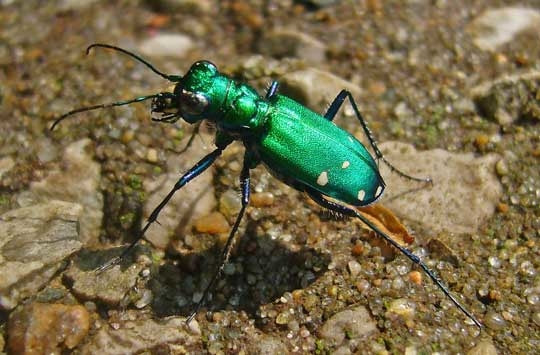
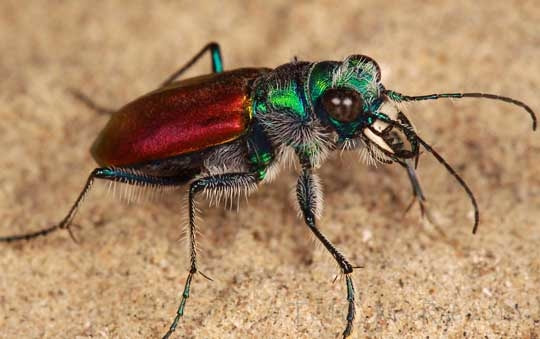
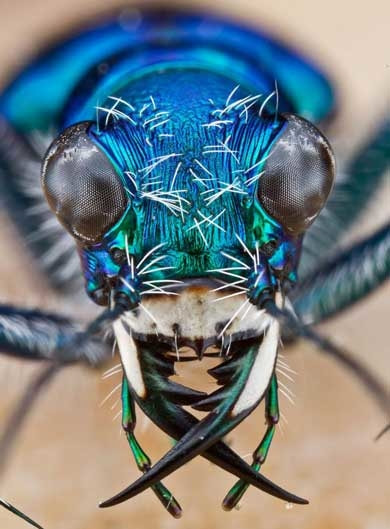
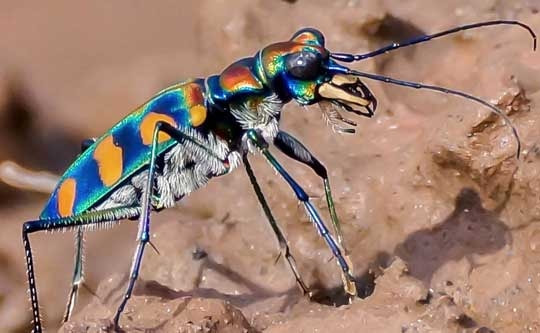
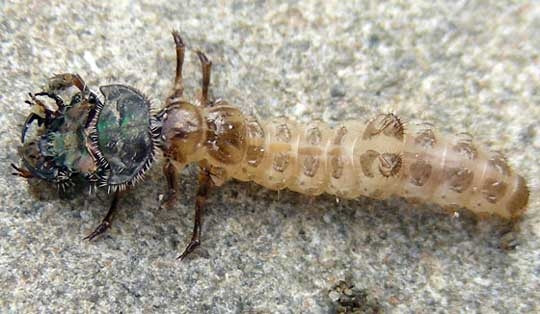
 RSS Feed
RSS Feed